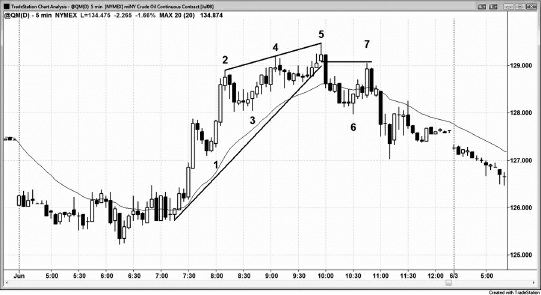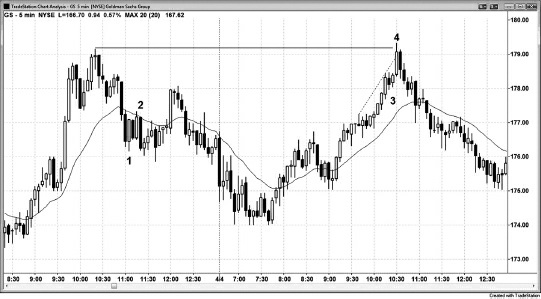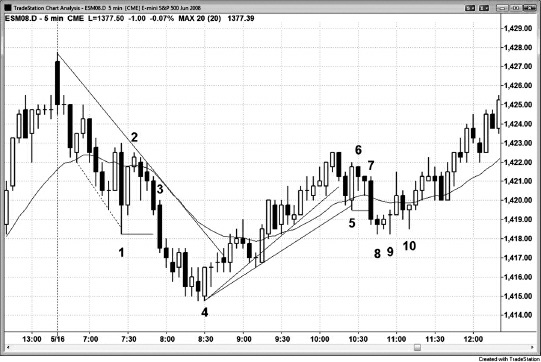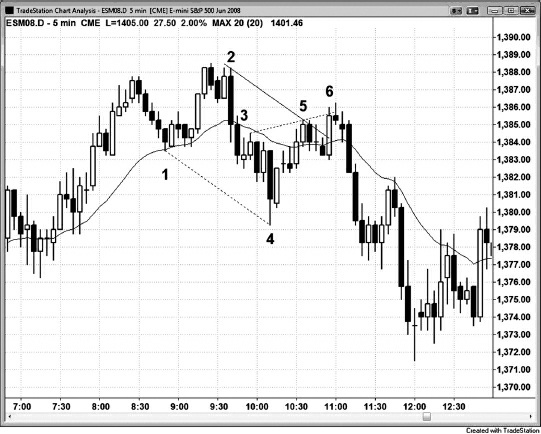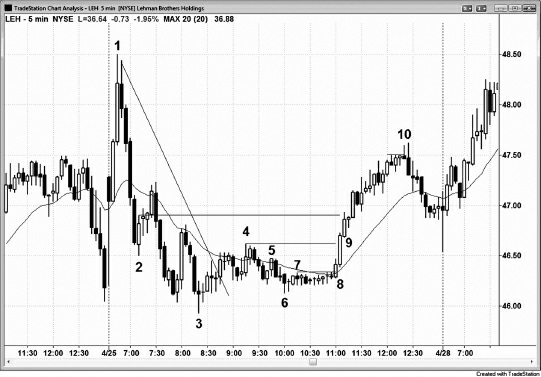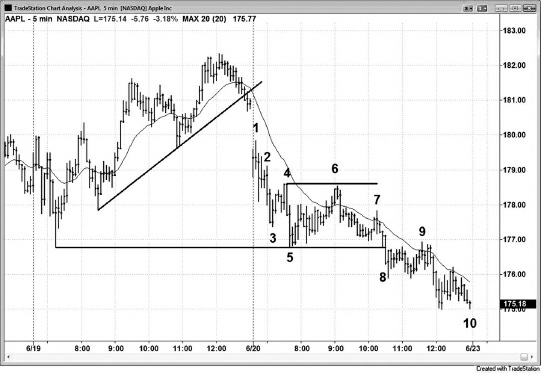Articles
Reading Price Charts Bar By Bar: The Technical Analysis of Price Action for the Serious Trader
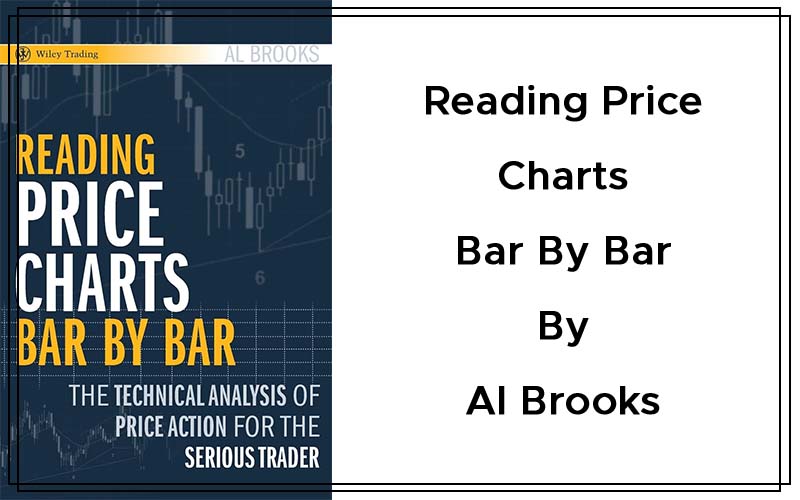
While complex strategies and systems may work for some traders, understanding price action is all you really need to succeed in this arena. Price action analysis is an effective approach to trading today’s markets whether you’re involved in stocks, futures, or options. It allows you to focus on the process of trading without being overwhelmed by a complicated collection of trading techniques. And while this method may appear elementary, it can significantly enhance returns as well as minimize downside risk.
One way to apply price action analysis to your trading endeavors is with chart patterns. Nobody understands this better than author Al Brooks, a technical analyst for Futures magazine and an independent trader for more than twenty years. Brooks discovered ten years ago that reading price charts without indicators proved to be the most simple, reliable, and profitable way for him to trade. Mastering that discipline is what made him consistently successful in trading. Now, with Reading Price Charts Bar by Bar, Brooks shares his extensive experience on how to read price action.
At the end of the day, anyone can look at a chart, whether it is a candle chart for E-mini S&P 500 futures trading or a bar chart for stock trading, and see very clear entry and exit points. But doing this in real time is much more difficult. Reading Price Charts Bar by Bar will help you become proficient in the practice of reading price action through the use of trendlines and trend channel lines, prior highs and lows, breakouts and failed breakouts, and other tools and show you how this approach can improve the overall risk-reward ratio of your trades.
Written with the serious trader in mind, this reliable resource addresses the essential elements of this discipline, including the importance of understanding every bar on a price chart, why particular patterns are reliable setups for trades, and how to locate entry and exit points as markets are trading in real time. Brooks focuses on five-minute candle charts to illustrate basic principles, but discusses daily and weekly charts as well. Along the way, he also explores intraday swing trades on several stocks and details option purchases based on daily charts revealing how using price action alone can be the basis for this type of trading.
There’s no easy way to trade, but if you learn to read price charts, find reliable patterns, and get a feel for the market and time frame that suits your situation, you can make money. While price action trading doesn’t require sophisticated software or an abundance of indicators, this straightforward approach can still put you in a better position to profit in almost any market. Reading Price Charts Bar by Bar will show you how.
Author’s Note:
My goals in writing this book are to describe my understanding of why the trades in Figure P.1 offer great risk-reward ratios, and to present ways to profit from setups like these in both stocks and futures trading. The most important message that I can deliver is to focus on the absolute best trades, avoid the absolute worst setups, and work on increasing the number of shares that you are trading. I freely recognize that every one of my reasons behind each setup is just my opinion and my reasoning about why a trade works might be completely wrong. However, that is\hbox{irrelevant}. What is important is that reading price action is a very effective way to trade, and I have thought a lot about why certain things happen the way that they do. I am comfortable with my explanations, and they give me confidence when I place a trade, but they are irrelevant to my placing trades, so it is not important to me that they are right. Just as I can reverse my opinion about the direction of the market in an instant, I can also reverse my opinion about why a particular pattern works if I come across a reason that is more logical or if I discover a flaw in my logic. I am providing the opinions because they appear to make sense, and they may help readers become more comfortable trading certain setups and because they may be intellectually stimulating, but they are not needed for any price action trades.
Figure P.1 AAPL, Daily Chart through June 10, 2008 (This chart with trendlines added is also in the final chapter, along with the explanations behind each trade.)
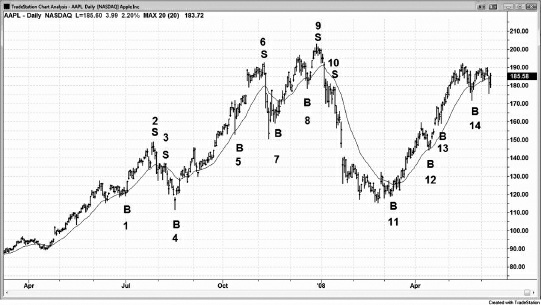
The book is a comprehensive guide to understanding price action and is directed toward sophisticated traders and market professionals. However, the concepts are useful to traders at all levels. It uses many of the standard techniques described by Edwards and Magee and many others, but will focus more on individual bars to demonstrate how the information they provide can significantly enhance the risk-reward ratio of trading. Most books point out three or four trades on a chart, which implies that everything else on the chart is incomprehensible, meaningless, or risky. I believe that there is something to be learned from every tick that takes place during the day and that there are far more great trades on every chart than just the few obvious ones, but to see them, you have to understand price action, and you cannot dismiss any bars as unimportant. I learned from performing thousands of operations through a microscope that some of the most important things can be very small.
I read charts bar by bar and look for any information that each bar is telling me. They are all important. At the end of every bar, most traders ask themselves, “What just took place?” With most bars, they conclude that it is just too confusing to understand and choose to wait for a pattern that they recognize. It is as if they believe that the bar did not exist, or they dismiss it as just institutional program activity that is not tradable by an individual trader. They do not feel as though they are part of the market at these times, but these times constitute the vast majority of the day. Yet, if they look at the volume, all of those bars that they are ignoring have as much volume as the bars they are using for the bases for their trades. Clearly, a lot of trading is taking place, but they don’t understand how that can be, and essentially they pretend that it does not exist. But that is denying reality. There is always trading taking place, and as a trader you owe it to yourself to understand why it’s taking place and to figure out a way to make money off it. Learning what the market is telling you is very time consuming and difficult, but it gives you the foundation that you need to be a successful trader.

Unlike most books on candle charts where the majority of readers feel compelled to memorize patterns, this book will provide a rationale for why particular patterns are reliable setups for traders. Some of the terms used have specific meaning to market technicians but different meanings to traders and I am writing this entirely from a trader’s perspective. I am certain that many traders already understand everything in this book, but likely wouldn’t describe price action in the same way that I do. There are no secrets among successful traders, and they all know common setups, and many have their own names for each one. All of them are buying and selling pretty much at the same time, catching the same swings, and each has his own reasons for getting into a trade. Many trade price action intuitively without ever feeling a need to articulate why a certain setup works. I hope that they enjoy reading my understanding of and perspective on price action and that this gives them some insights that will improve their already successful trading.
Some Pictures From the Book
Table of Contents:
- Price Action
- Trendlines and Trend Channels
- Trends
- Pullbacks
- Trading Ranges
- Breakouts
- Magnets
- Trend Reversals
- Minor Reversals: Failures
- Day Trading
- The First Hour
- Detailed Day Trading Examples
- Daily, Weekly, and Monthly Charts
- Options
- Best Trades
Reading Price Charts Bar by Bar: The Technical Analysis of Price Action for the Serious Trader By Al Brooks


